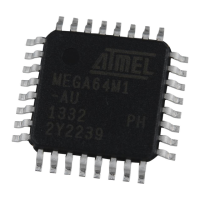
Do you have a question about the Atmel ATmega32M1 and is the answer not in the manual?
| Architecture | 8-bit AVR |
|---|---|
| Flash Memory | 32 KB |
| SRAM | 2 KB |
| EEPROM | 1 KB |
| Clock Speed | 16 MHz |
| GPIO Pins | 32 |
| I/O Pins | 32 |
| ADC Channels | 8 |
| ADC Resolution | 10-bit |
| UART | 1 |
| USART | 1 |
| SPI | 1 |
| I2C | 1 |
| PWM Channels | 6 |
| CAN | 1 |
| Operating Voltage | 2.7V - 5.5V |
| Operating Temperature | -40°C to +85°C |
| Temperature Range | -40°C to +85°C |
| Package | 44-TQFP, 44-QFN |
Explanation of interrupt sources, vectors, priority levels, and behavior during interrupt execution.
Details on the CLKPR register for dividing the system clock to reduce power consumption and affect peripheral frequencies.
Detailed explanation of Normal, CTC, and various PWM modes for Timer/Counter0 operation.
Explanation of the CAN protocol principles, standards, and message transmission priorities.
Description of error detection mechanisms (message and bit level) and fault confinement states.
List of ADC capabilities including resolution, accuracy, conversion time, input channels, and reference voltages.
Procedures for initiating ADC conversions, including single conversion and auto-triggering modes.
Overview of debugWIRE capabilities including program flow control, real-time operation, and symbolic debugging.
Procedures and considerations for programming the Flash memory using the SPM instruction.
Critical voltage, current, and temperature limits that must not be exceeded for device reliability.
